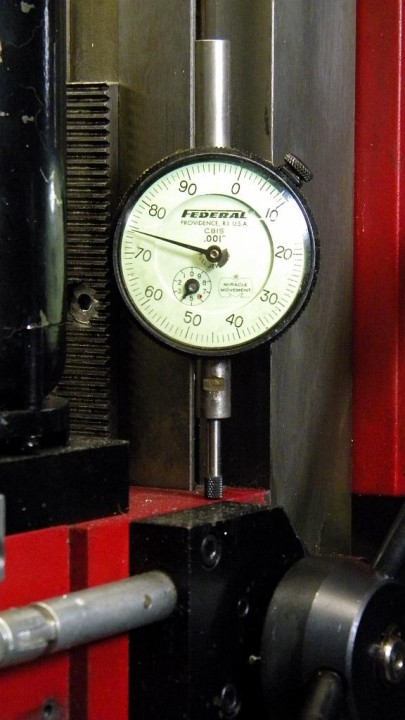 I bought an old Federal dial indicator from a retired machinist that had a big flat donut-shaped magnet glued on its back. I almost passed it up because it was kind of ugly, but it has turned out to be one of the most useful tools in my workshop. It is particularly useful for adjusting the Z-axis height on my Harbor Freight mini-mill.
I bought an old Federal dial indicator from a retired machinist that had a big flat donut-shaped magnet glued on its back. I almost passed it up because it was kind of ugly, but it has turned out to be one of the most useful tools in my workshop. It is particularly useful for adjusting the Z-axis height on my Harbor Freight mini-mill.
I’m a little mistrustful about dialing in the height because of the huge amount of backlash in the Z-axis. So I often stick my DI on the column and use it to set the height or to double-check the dial and make certain I haven’t miscounted the number of turns I’ve made. It only has a range of 1-inch but that’s all I need most of the time.
It was really helpful last night when I needed to remove a very small amount of metal using a fly cutter. The indicator showed that the head was dropping another 3-thousandths when I tightened the gib lock (which is one way to protect yourself from the mini-mill’s infamous “head drop problem“). I hadn’t experienced that problem before and I hope the gibs just need to be adjusted.
A couple of potential problems
To get the most accurate reading your indicator’s plunger needs to be perpendicular to the head. Instead of eyeballing it I’ve thought about building a magnetic mount for one of my other indicators that would slide up and down against the column’s dovetail. It would make it easier to position the indicator and ensure it’s always perpendicular. I didn’t have a big enough block of aluminum the last time I was going to make one and this morning I was wondering if it would be easier, cheaper and faster to just buy another column stop and modify it to hold an indicator.
And lastly, a more experienced machinist once told me you can ruin a cheap poorly-made dial indicator by sticking a magnet on it.
